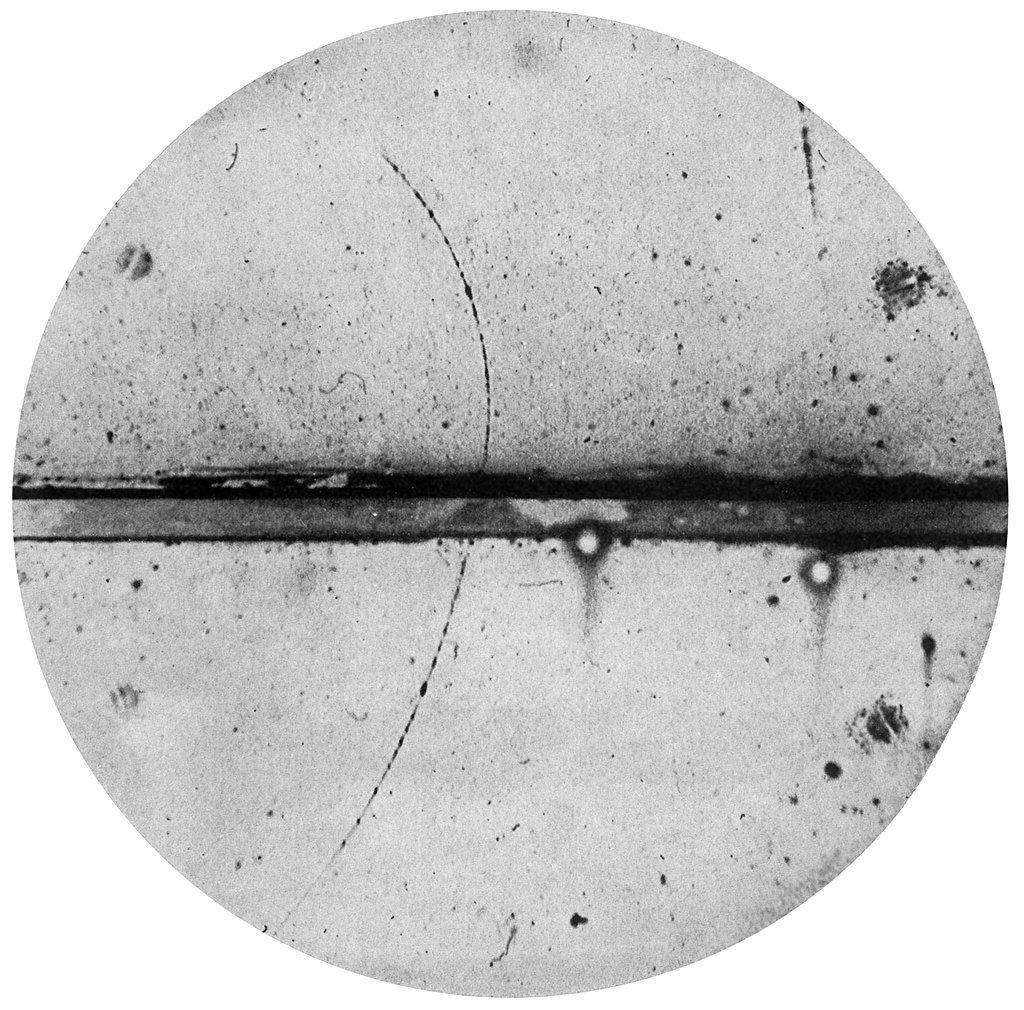
https://pl.wikipedia.org/wiki/Pozyton
A controversial theory
In 1928, Paul Dirac published a paper proposing that electrons could have both positive and negative charges. This paper introduced the Dirac equation, a unification of quantum mechanics, special relativity, and the then-new concept of electron spin to explain the Zeeman effect. The paper did not explicitly predict a new particle, but allowed positive or negative energy electrons as solutions. Hermann Weyl then published a paper discussing the mathematical implications of the negative energy solution. The positive energy solution explained the experimental results, but Dirac was puzzled by the equally important negative energy solution that the mathematical model allowed. Quantum mechanics did not simply ignore the negative energy solution, as classical mechanics often did in such equations; the double solution implied the possibility of spontaneous jumping of the electron between positive and negative energy states. However, no such transition has yet been observed experimentally.
Dirac wrote another paper in December 1929 in which he attempted to explain the inevitable solution with negative energy for the relativistic electron. He claimed that "... an electron with negative energy moves in an external electromagnetic field as if it had a positive charge." Furthermore, he argued that all of space could be viewed as a "sea" of negative energy states that were filled to prevent electrons from jumping between positive energy states (negative electrical charge) and negative energy states (positive charge). The paper also explored the possibility that the proton is an island in this sea, and that it may actually be a negative energy electron. Dirac acknowledged that the proton, which is much more massive than the electron, was a problem, but expressed "hope" that a future theory would resolve the issue.
Robert Oppenheimer strongly objected to the proton being a solution to the Dirac equation for a negative energy electron. He argued that if this were the case, the hydrogen atom would quickly self-destruct. Hermann Weyl in 1931 showed that a negative-energy electron must have the same mass as a positive-energy electron. Convinced by the arguments of Oppenheimer and Weyl, Dirac published a paper in 1931 in which he predicted the existence of a yet-to-be-observed particle, which he called an "anti-electron", which would have the same mass and opposite charge as the electron, and which would mutually annihilate on contact with the electron.
Feynman, and earlier Stueckelberg, proposed the interpretation of the positron as an electron moving backwards in time, reinterpreting the negative energy solutions of the Dirac equation. Electrons moving backwards in time would have a positive electrical charge. Wheeler invoked this concept to explain the identical properties common to all electrons, suggesting that "they are all the same electron" with a complex intersecting world line. Yoichiro Nambu later applied it to all production and annihilation of particle-antiparticle pairs, stating that "the eventual creation and annihilation of pairs that may occur now and then is not a creation or annihilation, but only a change of direction of moving particles, from past to future or from the future to the past. The point of view back in time is now accepted as completely equivalent to the other pictures, but it has nothing to do with the macroscopic terms "cause" and "effect" which do not appear in the microscopic physical description.
After theory came experiments...
Several sources claim that Dmitri Skobeltsyn first observed the positron well before 1930 and even as early as 1923. They claim that while using Wilson's cloud chamber to study the Compton effect, Skobeltsyn detected particles that behaved like electrons but curved in the opposite direction in an applied magnetic field, and that he presented pictures of the phenomenon at a conference in Cambridge on 23 -July 27, 1928. In his 1963 book on the history of the discovery of the positron, Norwood Russell Hanson detailed the reasons for this claim, and perhaps this is where the myth originated. But in addition, he also presented Skobeltsyn's objection to this claim. Later, Skobeltsyn rejected this claim even more strongly, calling it "nothing but pure nonsense."
Skobeltsyn paved the way for the eventual discovery of the positron with two important contributions: the addition of a magnetic field to his cloud chamber in 1925, and the discovery of charged particles of cosmic rays, for which he was honored in Carl Anderson's Nobel Lecture. Skobeltzyn observed possible traces of positrons in photographs taken in 1931, but did not identify them as such at the time.

https://en.wikipedia.org/wiki/Positron
Similarly, in 1929, Chung-Yao Chao, a student at Caltech, noticed some anomalies that indicated particles behaving like electrons but with a positive charge, although the results were inconclusive and the phenomenon went unexplored.
Carl David Anderson discovered the positron on August 2, 1932, for which he was awarded the Nobel Prize in Physics in 1936. Anderson did not invent the term "positron", but used it at the suggestion of the editor of the journal Physical Review, to whom he submitted his paper on the discovery in late 1932. The positron was the first evidence of antimatter and was discovered when Anderson allowed cosmic rays to pass through a cloud chamber and a lead plate. A magnet surrounded this apparatus, causing the particles to bend in different directions depending on their electrical charge. The ion trail left by each positron appeared on the photographic plate with a curvature corresponding to the mass-to-charge ratio of the electron, but in a direction that indicated that its charge was positive.
Anderson wrote in retrospect that the positron might have been discovered earlier based on the work of Chung-Yao Chao, if only they had continued. Frédéric and Irène Joliot-Curie in Paris had evidence of positrons in old photographs when Anderson's results were published, but rejected them as protons.
The positron was also discovered in parallel by Patrick Blackett and Giuseppe Occhalini at the Cavendish Laboratory in 1932. Blackett and Occhialini delayed publication to get more solid evidence, so Anderson was able to publish the discovery first
Autor: Maciej Gdala










